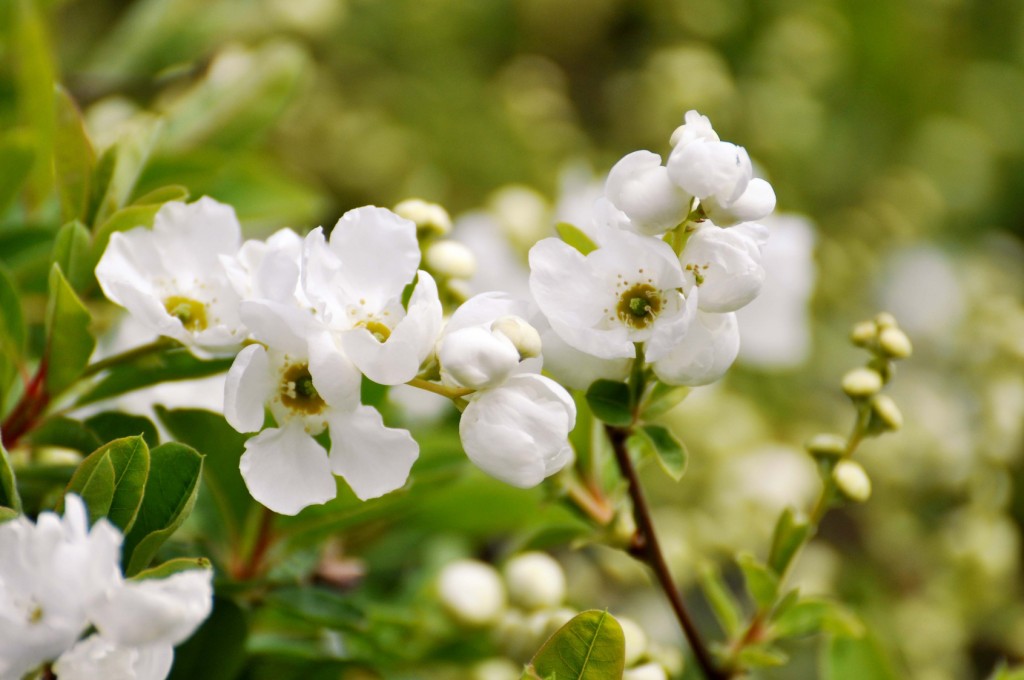May is the month when the warmer weather hints at the Summer days ahead. Now is the time that gardens really spring into life, rewarding your for all those months of preparation. Spring flowers provide the first of the really colourful shows that mark the start of Summer. Blossom is attracting the pollinators ensuring a good crop for the year. Whilst birdsong is filling the air along with the happy buzz of bees. It’s the perfect time to relax and reap the rewards of your hard work.
However, before you get too comfy in the deckchair, there are a few garden chores that will ensure your garden looks its best right through Summer and into early Autumn.
Quick Gardening Checklist for May
- Protect your tender plants from late frosts
- Start to earth any potatoes
- Plant out your summer bedding at the end of the month
- Collect rainwater from summer showers for re-cycling
- Keep on top of weeds with regular hoeing
- Don’t let your greenhouse plants overheat, keep well watered and open vents, windows and doors on warmer days
- Mow your lawn regularly
- Keep an eye out for nesting birds when clipping your hedges
- Divide up overcrowded bulbs
- Keep an eye out for lily beetle grubs
1. Lawns
You should mow your lawn regularly and continue to add the clippings to your compost heap. Keep an eye on any weeds that could be growing, and remove them as necessary.
If you are sowing a new lawn, you need to make sure that it does not dry out. Also dig a ‘gutter’ around the edges of your new lawn, to stop it growing into your flower beds.
2. Greenhouse
You should open the vents of your greenhouse on warm and sunny days. This is to regulate the temperature and not damage your more delicate plants. On extra warm days you may need to dampen the floor to increase the humidity. If you believe that your greenhouse is getting too hot, you can apply a coat of shade paint to keep temperatures at a manageable level.
Start to harden off your half hardy bedding plants that you started under cover. By exposing these plants to sunlight and warmth for short amounts of time, and gradually increasing the time, you can prevent the ‘shock’ that is experienced when the plants are moved outside permanently.
Start to separate your plants as they grow to prevent any diseases being spread from the close proximity of the plants.
3. Flowers
Commence weekly liquid feeds to help your flowers remain healthy and promote a good display. Whilst feeding, check your soil and make sure that your plants are getting watered enough. The soil should feel damp but not water logged.
Provide adequate support for tall plants (particularly perennials) to stop them falling over or the stem snapping. You should also stay vigilant on dead heading your plants to promote further flowering.
Sow your hardy annual flowers now, but later sowing will promote flowering later in the year.
Some plants, such as fuchsia’s, may benefit from having the very tips of their shoots removed. By removing the tips, you are encouraging the plant to branch out more.
4. Trees & Shrubs
Clip your evergreen hedges, and use the clippings in your compost heap in combination with your grass clippings. You should also remove green shoots that appear on your hardy evergreens to prevent reversion.
Tie in all your twining climbers as often as possible to their supports. You should also tie in your climbing and rambling roses. Keep the stems as horizontal as possible to restrict the flow of sap which causes more side shoots on the length of the stem, which will produce a bountiful display of flowers.
You will find that Viburnum Beetles will begin to chew holes in your leaves this month, making your plants look tattered. You should inspect your leaves and pick off any grubs that are using your leaves for a snack.
5. Ponds
Continue planting bog gardens. Keep them maintained and tidy, removing dead leaves and debris. Once cleared mulch with composted bark or garden compost.
It is important that you continue to thin out and cut back any excessive growth of your pond plants. Once your plantings have been properly established, you can begin to add fish. Try not to add goldfish until a little later in the Summer as they have a tendency to eat frogspawn which can affect the natural cycle of pond life. (Not to mention you want the frogs and toads to help keep slugs from your garden).
Should you need a hand with garden landscaping and general maintenance, Thames Valley Landscapes can help. Call us on 01628 629 720 for creative ways to make the most of your garden space all year round.


